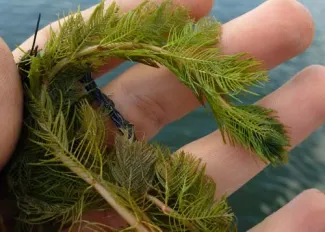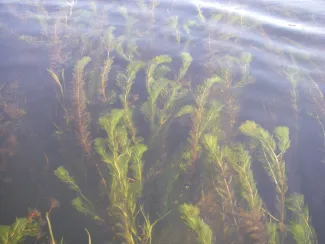Eurasian Watermilfoil
Eurasian Watermilfoil is native to Europe, Asia, and northern Africa. Not much is known about when or how it was introduced, but it was likely between the 1880s and 1940s and possibly through the aquarium trade or transported on watercrafts and equipment.
Was first observed in Oklahoma in 1959 in Spavinaw Lake, and has since been found in Comanche City, Prague City, Pauls Valley City, Sportsman, Jap Beaver, Lawtonka, Sooner, Quanah Parker, Carl Etling, Humpherys, Fuqua, Robert S. Kerr, Stanley Draper, Fort Cobb, Elmer Thomas, Chandler, Purcell City, Clear Creek, Shawnee, Dead Warrior, Longmire, Cleveland City, Dahlgren, Elk City, and Rush Lake.
Impacts
The major impact that Eurasian watermilfoil causes is that it can crowd out native plant species, along with hybridize with some native plants. It also creates a canopy like structure toward the water surface that can cause boating issues. Eurasian watermilfoil is easily spread by fragments that are carried by boat, trailer, and other gear.
Identification Keys
- Leaves are feather-like with four arranged in a whorl pattern around the steam, with 14 or more leaflets on each leaf
- Tips of the plant is sometimes red or pink in color
- Pink terminal spike (up to four inches long) produces tiny yellow flowers
- Grows between 1-4 meters, but can extend up to 10 meters in height


